A very close sun pierces our caps and sends soroche, the altitude sickness that had already risen to lysergic depths, nose up. To the side, a kind gentleman from the Kacllaracay community spills two drops of corn chicha on the ground and bends down in prayer to invoke the fertility of Pachamama, mother earth. All around, sudden gusts descend from the Andean peaks and glaciers, dishevelling perfectly circular terraces, perhaps first excavated by a meteorite a few hundred thousand years ago.
This is not a psychedelic journey by Timothy Leary, but the place Virgilio and Malena Martinez have chosen as the first special laboratory of Mater Iniciativa, one of the most exciting projects we have seen in the two decades that have changed the course of global gastronomy.
It all started in 2011, when Central's chef asked his sister, a medical graduate, to help him make a dream come true: to build a research centre that would thoroughly scour all the surfaces of that crumpled sheet of paper called Peru, a country that covers less than 0.25% of the world's territory but holds 80% of the planet's ecosystems. With hindsight, that surge of pride that sent truffles and foie gras out the door to make room for tarwi lupins, tumbo bananas and chuncho cacao changed the destiny not only of Peruvian cuisine but of an entire continent, infected by the local pride that the chef from Lima unleashed, among the first in a South America hitherto enslaved to inauthentic European gastronomic rituals.
Cuzco is the gateway to Machu Picchu, but also to Moray, a lunar settlement that has functioned for centuries as a natural laboratory for the peoples that have succeeded one another in the Sacred Valley, long before the Incas settled there, around 1,400 AD. A fertile ground for seeds that shows which plants, vegetables, flowers, wild herbs and roots can thrive at these dizzying heights (3,500 metres above sea level).
Before the pandemic, the Martinez siblings and Pia Leon, Virgilio's wife, tiptoed in to seek connections with the two Quechua communities of Mullak's Misminay and Kacllaracay, a total of 500 families. Overcoming the understandable diffidence of the locals, they had Rafael Freyre, the same architect as Casa Tupac, Central's headquarters in Lima, design a building that would contain the Mater experimental centre, a natural reservoir of ingredients for restaurant Mil, built in the same building. And not only for Mil but for all the brands now managed in Peru by the Martinez/Leon family: from Central to Kjolle, from the catering offer of the Explora hotels (two locations: Urquillos, nearby, and in the Atacama Desert, Chile) to the new Belmond Palacio Nazarenas project in Cuzco.
A place of study and civilisation, a gastronomic laboratory with functions similar to Ferran Adrià's Taller del Bulli in Barcelona or the test kitchen of Renè Redzepi's Noma in Copenhagen, with one important difference: here there is absolute integration with the surroundings. A secular immersion in the cosmogonic, anthropological, ethnobotanical and agricultural knowledge of a small but relevant portion of the Cordillera, which has already resulted in the classification of hundreds of vegetal species, herbs and tubers previously unknown to the urban public, precious food sources on the verge of extinction but now increasingly recurring in the country's gastronomic vocabulary.
A reconnection with nature woven with farmers, anthropologists, ethnologists, craftsmen, beekeepers, taxonomists, entomologists attracted by an unreal and sublime scenario. Which gave rise to experimental workshops on corn and potatoes, cocoa and spirits, ceramics and textiles. And at restaurant Mil: kañiwa, cushuro or kjolle pass from Malena's hands to those of her brother Virgilio and resident chef Luis Valderrama, with the taste and aesthetic results that you can well imagine.
Before leaving you to the photo story, we close with two reflections that underline the project's enormous potential: the Andean ingredients that you now find on the Martinez's tables are just the tip of a much deeper iceberg, ‘There are Andean communities that are impenetrable,’ Virgilio explains, ‘and hold treasures that we still know very little about.’ All this without talking about what grows, swims or walks in the Amazon, a region that makes up 60% of the country: 'Installing a Mater centre in the rainforest is our dream. But right now we would run into a thousand problems, both logistical and social’. One day not far off it will happen.
MIL IMMERSION, NOVEMBER 2022
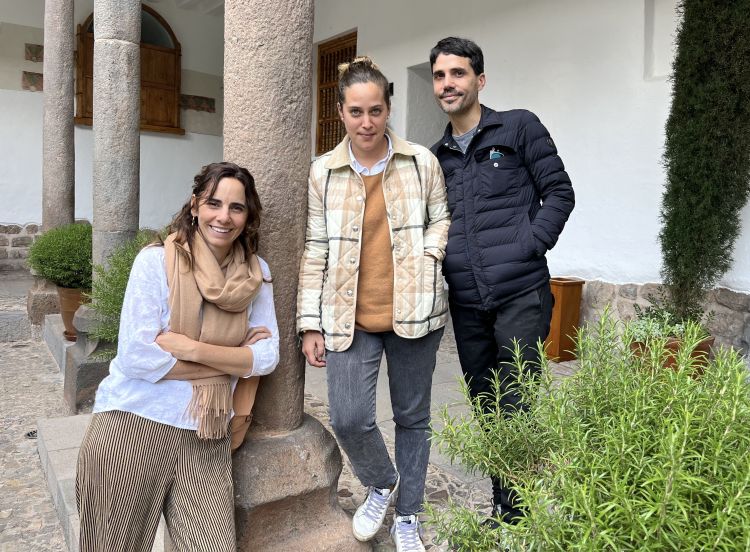
Malena Martinez, Pia Leon and Virgilio Martinez
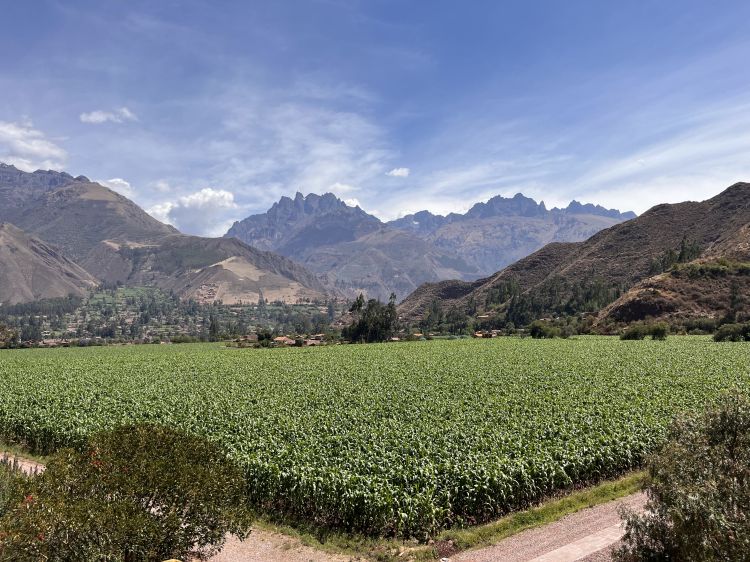
The Andean expedition begins at Explora, next to the village of Urquillos, about an hour's drive (40 km) from Moray, home to Mil. The hotel is in a scenic location, with views of the Andes and of maize plantations, and the rooms are large and spacious. An excellent starting point to explore the attractions of the Sacred Valley of the Incas (above all, Machu Picchu)
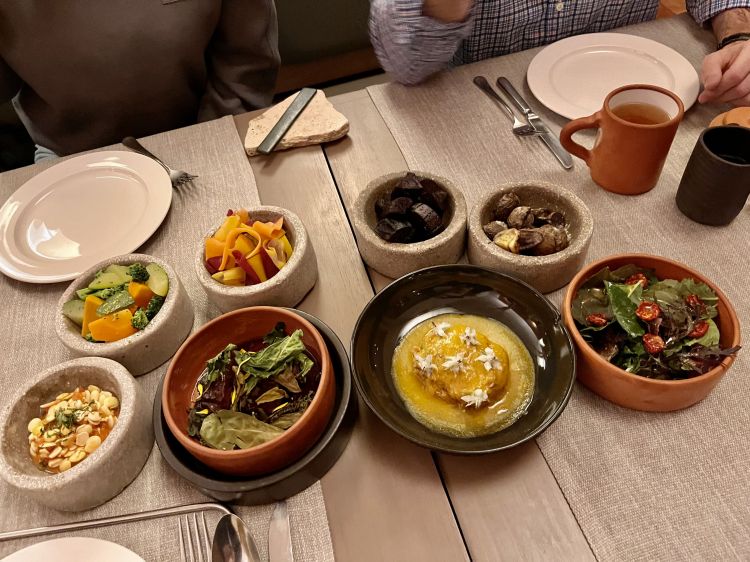
Explora's catering offer, curated by the Martinez family, bets everything on Andean raw materials, in sharing mode. Vegetable-focused dishes, served in the centre, so they can be shared: Cream of carrot and leek, Noodle with smoked chilli pesto and fresh cheese from the 4 lagoons, Native potatoes with Chaco clay, Tarwi ceviche, Chuncho cocoa ice cream
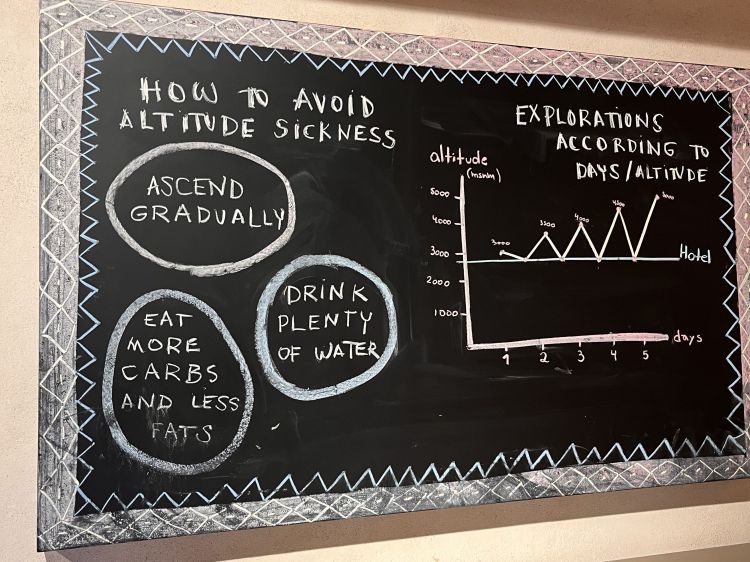
Enemy number one of the Andean expedition is soroche, the altitude sickness. The blackboard at the Explora hotel explains how to minimise the discomfort: gradually climb the altitudes, eat more carbohydrates and less fat, drink lots of water. The writer suffered for 24 hours, complete with creative high-altitude hallucinations
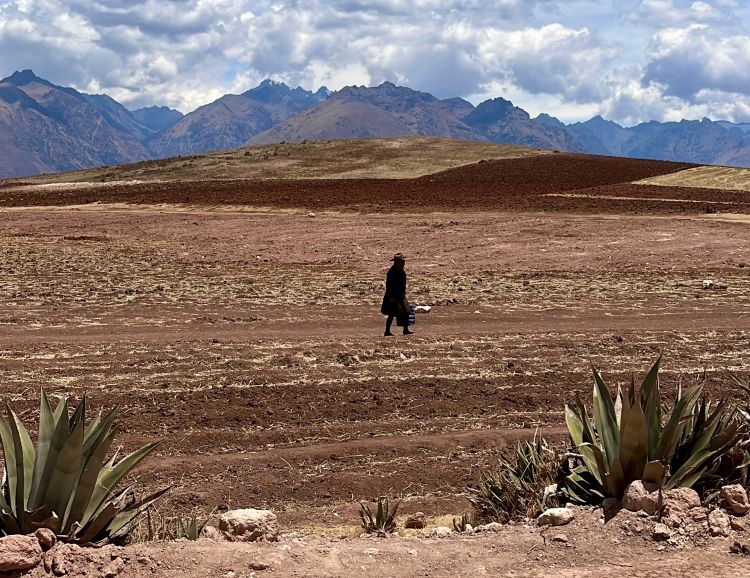
The road from Urquillos to the archaeological site of Moray runs through spectacular desert expanses and plots of potatoes, wheat and broad beans
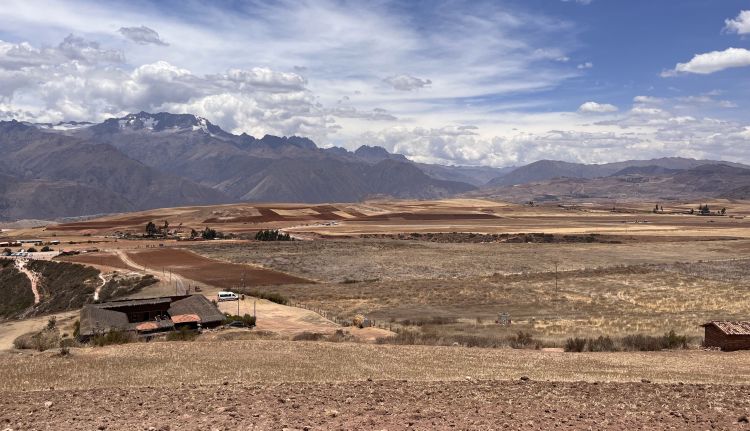
Below left, the Mil//Mater Iniciativa complex, designed by architect Rafael Freyre in Moray, 3,568 metres above sea level
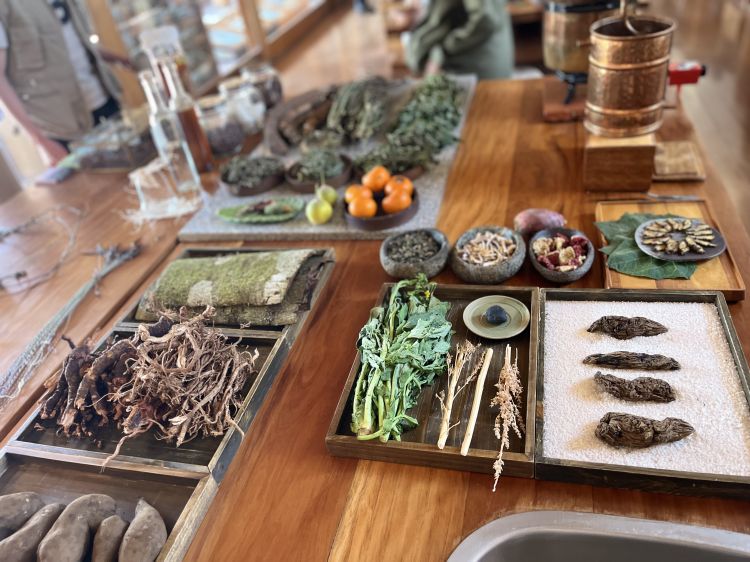
The heart of Mater Iniciativa is the exploration of the raw materials of this portion of the Andes: berries, tubers, grasses, maize, and fruit, from which they will make dishes, drinks, but also textiles, ceramics, artworks
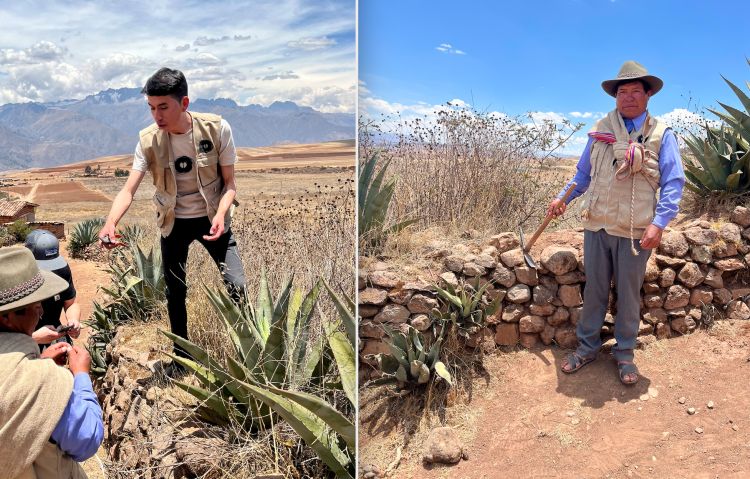
The experience in Moray includes the Mil Immersion, which starts in the early hours of the morning: before sitting down to eat, you explore the properties of local plants. Left in the photo, herb, root and medicinal plant expert and master distiller Manuel Contreras, author of special Andean liqueurs, distillates and cocktails. To the right, Efrain, aka Efra, from the local Andean community. He knows the function of every single plant: medical, cosmetic, aesthetic or edible properties of versatile and tenacious species
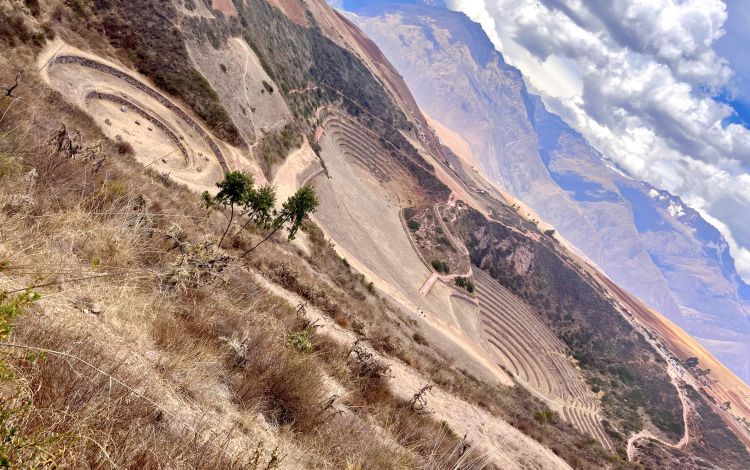
The now famous circular terraces of Moray, a true Andean agricultural reservoir. Already inhabited by pre-Columbian civilisations (Wari ethnic group, 700-1,200 BC), they experienced centuries of splendour in the Inca inter-kingdom, 15th and 16th centuries. It is assumed that the depressions in the terraces were originally caused by a meteorite that fell millions of years ago
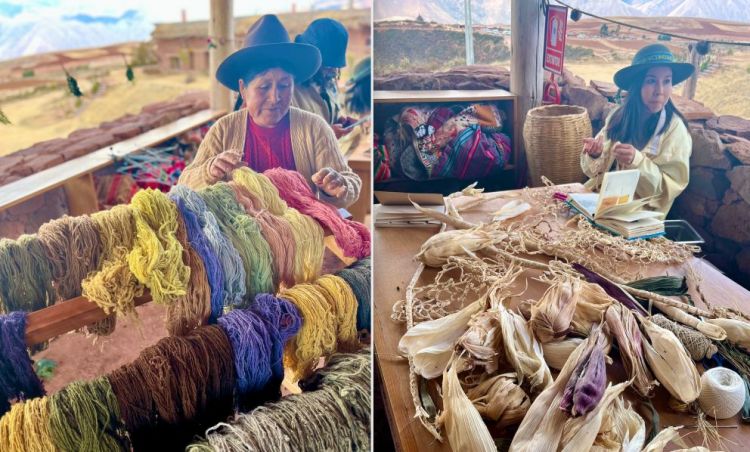
Mater Iniciativa is not just about food. It also supports ancient practices of the Andean community of Kacllaraccay, such as the creation of textiles and the dyeing of sheep and alpaca wool using bothanical and natural plant pigments (left), which are 'simmered' in a pot filled with eucalyptus leaves or kjolle flowers. It is estimated that up to 190 colours can be obtained from 7 plants. The maize plant (right) is instead dried for artistic and ornamental purposes
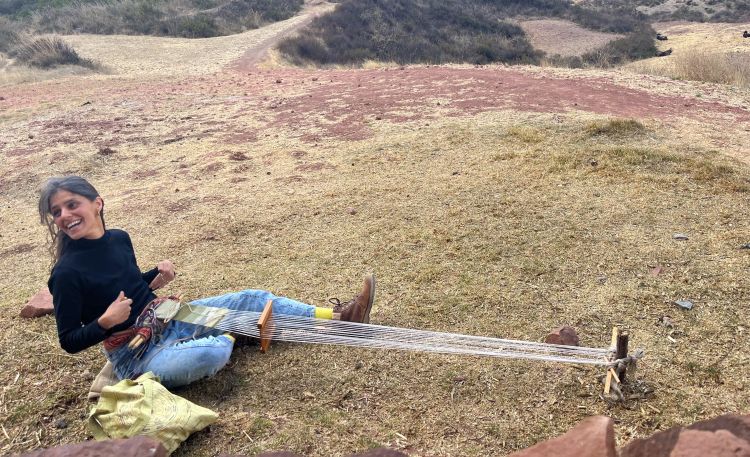
A craftswoman of Argentinian origin grappling with an Andean loom. Mater Iniciativa attracts designers, anthropologists, artists, botanists from all over the world
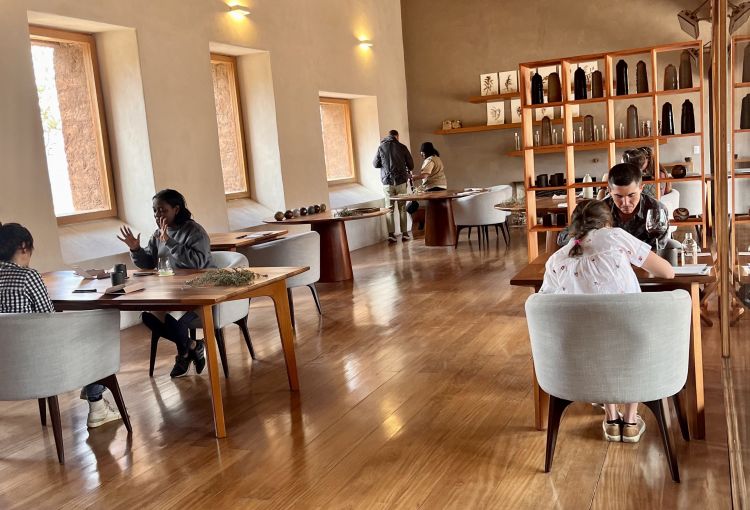
The Mil restaurant, seating a maximum of 25 guests, is only open for lunch. The tasting menu costs $260, if you also add the Mil Immersion experience it comes to $424. From the restaurant's small windows, you get unforgettable glimpses of the Andes
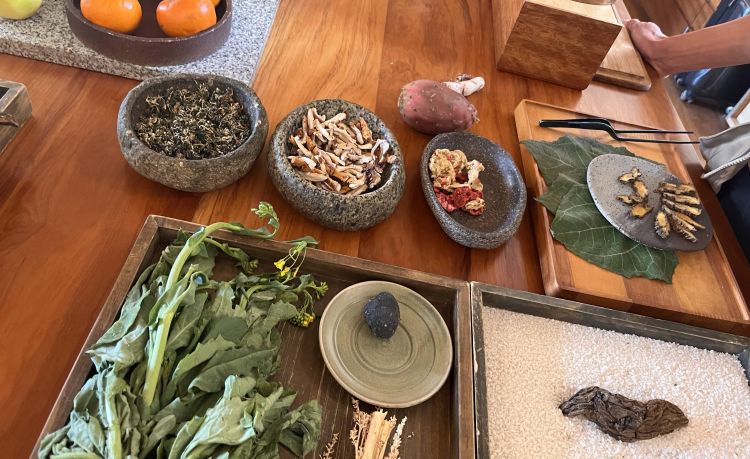
Mil's menu consists of 8 courses and each one expresses a small lesson in agriculture and ethnobotany. Each course is composite and brings together the inspiration drawn from this portion of the Andes:
1. Preservation: fresh or dehydrated chuño potatoes, corn, uchucuta hot sauce (traditional chilli sauce) and oca
2. Plateau: cabuya nectar (hardy American agave, also used for houses’ roofs), lamb tartare, kañiwa pseudocereal and cushuro (Andean weed made famous by Martinez)
3. Andean forest: tarwi (Andean lupine) pie and salad, duck, callampa mushrooms, rocoto chilli
4. Maize diversity: Andean multicolour symbol (see 3 photos below)
5. Extreme altitude: alpaca, black quinoa, multigrain, airampo cactus
6. Central Andes: native potatoes (see the 4 photos below), stalks, edible chaco clay, markhu (medicinal plant)
7. Frozen Cordillera: a dish consisting of ingredients that can withstand an altitude of over 4,000 metres such as muña (a balsamic aromatic plant), kjolle (an orange flower, served in cream)
8. Sweet rest (Huatia): mullaska (molluca) and a complete exploration of all the parts that make up the cocoa pod, including the mucilage (the gelatinous part surrounding the beans, made into granita) and the husk
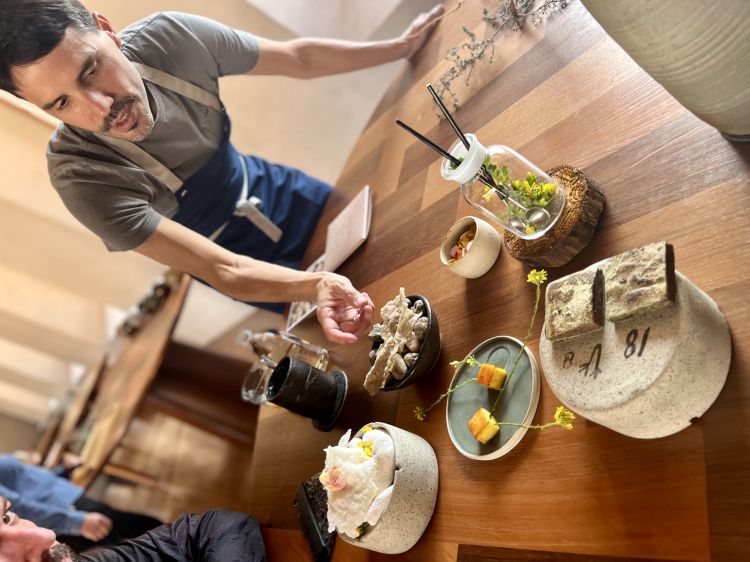
Virgilio Martinez serves at Mil's table. The limeño chef climbs the Andes whenever he can. The resident chef is also from Lima, Luis Valderrama. He works closely with the Andean communities of Mullak'as-Misminay and Kacllaraccay. ‘The fields are my classroom and the farmers my teachers,’ he explains
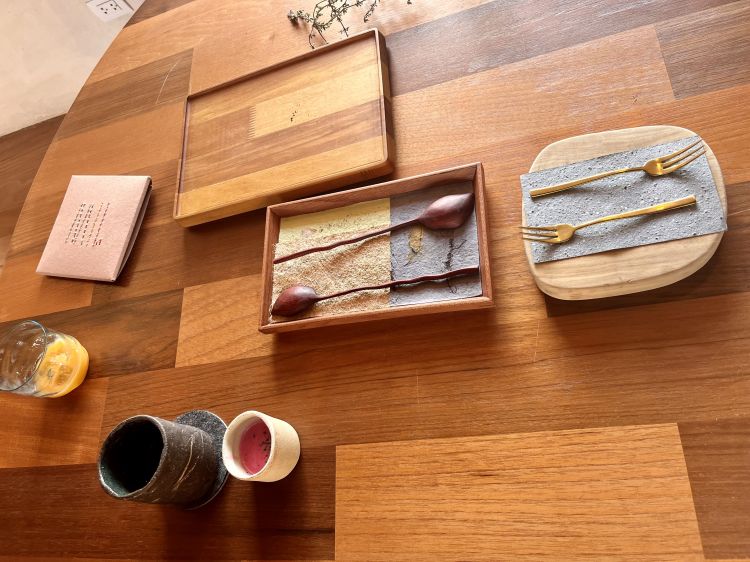
How do we communicate unknown ingredients to the world? Through beauty. The aesthetics of Mil - of all the plates, cutlery and accessories in the Martinez family's restaurants – are of great value
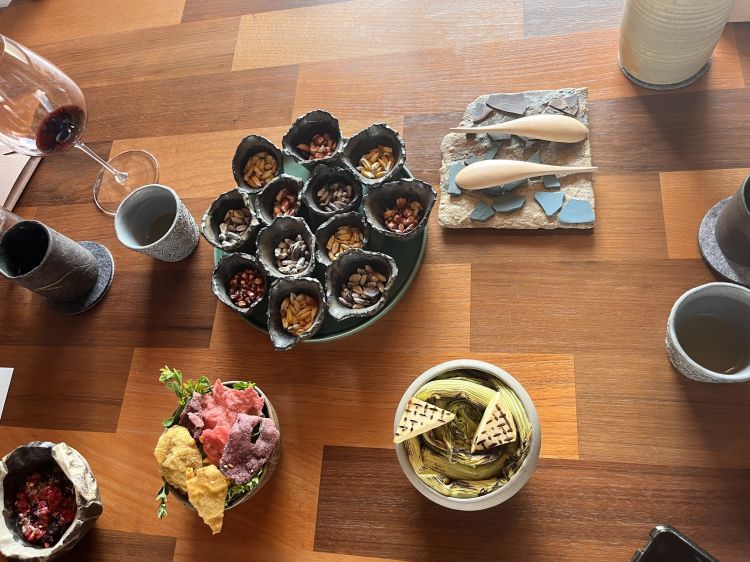
In the centre, an extraordinary collection of dried Andean maize: purple piscoronto maize, yellow chullpi maize, red kculli, white paracay... Countless possibilities in the kitchen: cakes, purees, biscuits, fermented drinks (chicha), polenta...
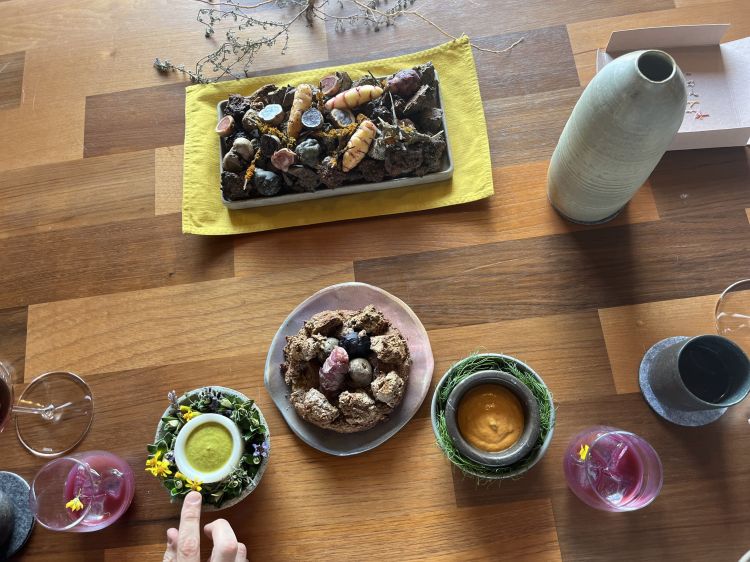
Tubers and potatoes are symbols of Peruvian gastronomy and Mater Iniciativa. There are about 4,200 papas nativas, native potatoes, in the country. Manuel Choqque Bravo from the Huatata region works incessantly on cross-pollination experiments, constantly generating new species. No one can understand the possibilities of potatoes in the kitchen until they have been to Peru

An important part of Mater Iniciativa is dedicated to spirits and liqueurs. Cañazo (from cane sugar), chicha de jora, extractions of tumbo (banana passion fruit), fermented mashwa, oca... possibilities and aromatic spectrums are endless. Right in the photo, the label of Q'aqe, 'highland bitter': it is made with 26 herbs, roots and wild plants harvested above 4,000 metres. Fabulous
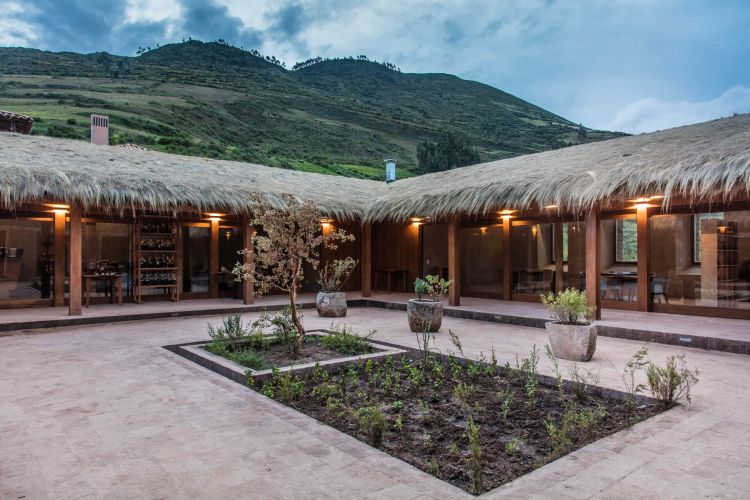
The interior patio at Mil Centro
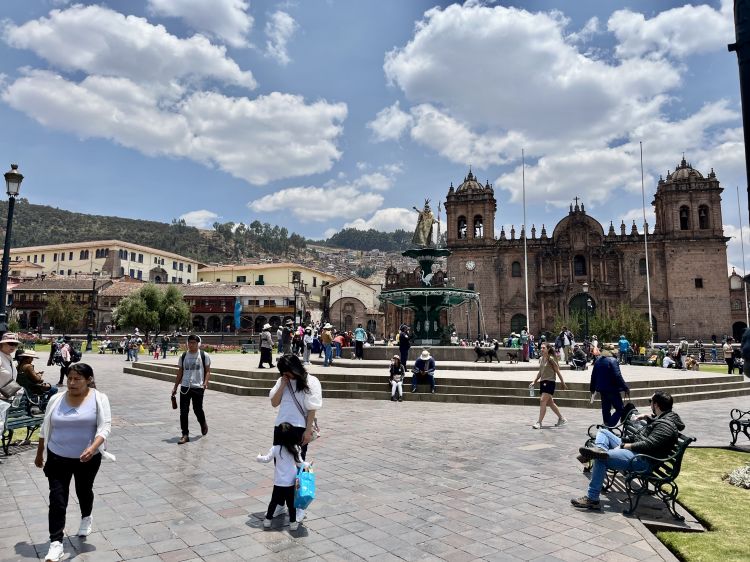
Plaza de Armas, the main square of Cuzco, Peru's first tourist destination, 3,399 metres above sea level. Cuzco is about 1 hour and 20 minutes from Moray
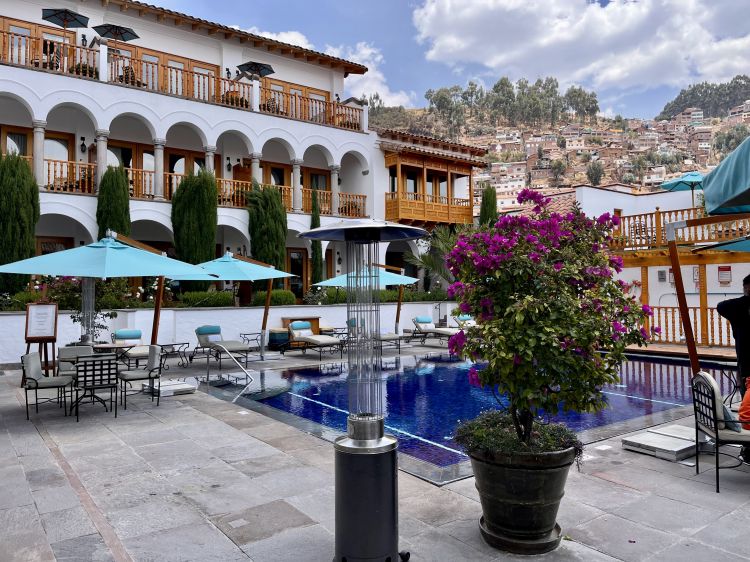
Detail of the Belmond Palacio Nazarenas hotel in Cuzco: Pia Leon's new restaurant will make its debut here on 10th January 2023. The focus will once again be on Andean super-local products
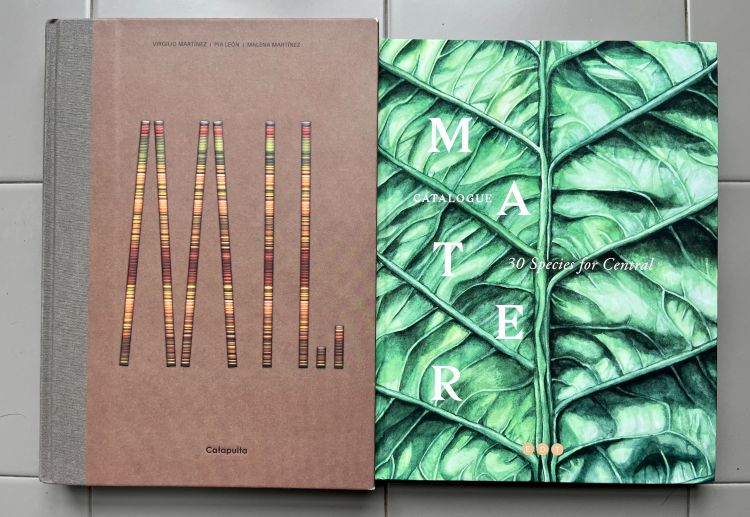
Two books to delve deeper into the history of Mil and Mater.In: the recent 'Mil' (Catapulta editions, in English, written with Anglo-Argentinian journalist Sorrel Moseley-Williams) and 'Mater catalogue, 30 species for Central', two small masterpieces but also the beginning of a species classification work that promises to be endless
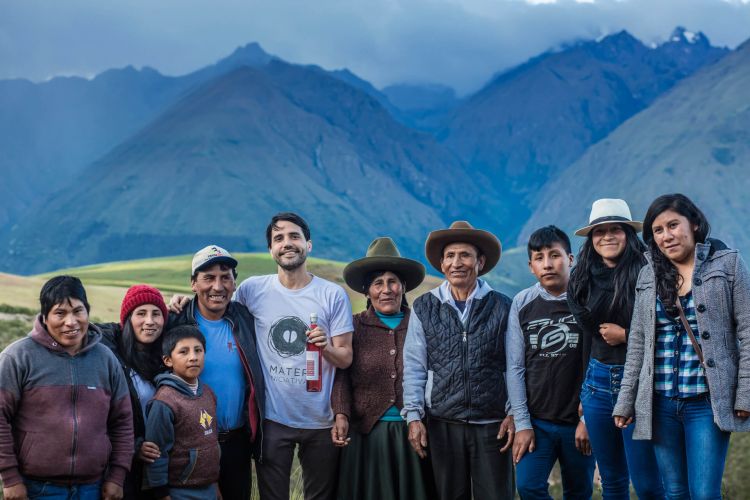
Virgilio Martinez with Mullak's Misminay and Kacllaracay communities
1. continued
Translated into English by Slawka G. Scarso